My coworker seemed surprised when I told him I was going home at lunch to work on croissants. He wondered if all croissant recipes are so complicated. No. But I chose the most complicated one.
I seem to have convinced myself that the recipe with the most steps must produce the best result. By no means is this rule always true, but in this case, it was. Spending my lunch break rolling and shaping buttery dough was a small price to pay for croissants this good.
And that’s just the beginning (well, it’s the end of the recipe, but it’s the beginning of me telling you about the recipe). The process starts a couple days earlier, when you feed your starter. If you don’t have a starter, you should make one! It isn’t hard, and I’m more proud of my all wild-yeast bread than anything else I’ve accomplished in the kitchen this year.
Once your starter is awake and you’ve mixed up another pre-dough with instant yeast, you’ll make your dough, but instead of kneading it, you’ll spend a minute or so fussing with it every half an hour for a few hours. Once it’s risen and chilled, you can roll it out and start working in the butter, and this process takes a few minutes of fussing over the course of several hours too. Then chill the dough some more. Then roll it out some more. Then, finally, you can shape your croissants! But then you have to let them rise for a couple hours before baking.
I actually love recipes like this. I love getting to play with dough for just a few minutes at a time, and because the dough is chilled in between, it’s adaptable to my schedule. And in this case, all that fussing paid off with the best croissants I’ve made yet. My coworker grabbed two, and then he didn’t seem to doubt my lunchtime fussing at all.
More experiments with croissants:
Tartine Bakery (the recipe in their first book is different than the recipe in their bread book)
Martha Stewart (using fresh yeast)
Martha Stewart (using instant yeast)
One year ago: Taco Pasta Salad
Two years ago: Green Chile Huevos Rancheros
Three years ago: Pan-Seared Steak with Red Wine Pan Sauce
Printer Friendly Recipe
Croissants (adapted from Tartine Bread)
Makes 16 croissants
I’ve shortened the instructions and added volume measurements. Keep in mind though, that the weight measurements are more precise, so if you have a scale, use it (as always).
The original recipe recommends an egg wash made from 2 egg yolks and 1 teaspoon of heavy cream, but I used a whole egg whisked with a pinch of salt (which loosens the protein structure of the egg) because I didn’t want 2 extra egg whites to use up.
I wouldn’t have minded the croissants being just a little bit sweeter. Next time I’ll increase the sugar to ½ cup (100 grams).
You don’t use all of the leaven, because the leftover leaven becomes the starter that you keep and feed and use in the future.
Poolish:
200 grams (1½ cups) all-purpose flour
200 grams (⅔ cup) water, room temperature
3 grams (1 teaspoon) instant yeast
Leaven:
1 tablespoon starter
220 grams (1⅔ cups) all-purpose flour
220 grams (¾ cup) water, room temperature
Dough:
450 grams (1¾ cup) whole milk, room temperature
300 grams leaven
400 grams polish (this is all of the poolish)
1000 grams (7 cups) bread flour
28 grams (4½ teaspoons) salt
85 grams (7 tablespoons) sugar
10 grams (1 tablespoon) instant yeast
400 grams (28 tablespoons, although I used a full pound (32 tablespoons)) unsalted butter
½ cup all-purpose flour
Egg wash
1. To make the poolish: In a small bowl, mix the flour, water, and yeast. Cover and let stand at room temperature for 3-4 hours or store overnight in the refrigerator.
2. To make the leaven: In a small bowl, mix the starter, flour, and water. Cover and let rise overnight.
3. Add the milk, leaven, and poolish to a large mixing bowl; stir to break up the doughs. Add the flour, salt, sugar, and yeast; mix thoroughly until there are no bits of dry flour. Cover and let rest for 25-40 minutes. Fold the dough a few times by using a dough scraper to scoop up one side of the dough and drape it over the rest of the dough.
4. Allow the dough to ferment for 3 to 4 hours and give it another few turns every 30 minutes. This takes the place of kneading. Be more gentle with the turning toward the end of the rising time. The dough is ready when it’s slightly increased in volume and is full of air bubbles. Flatten the dough into a rectangle, wrap it in plastic wrap, and refrigerate for 2-3 hours.
5. Just before rolling out the dough, cut the cold butter into cubes. Gradually adding the ½ cup flour, pound the butter with a rolling pin until it comes together into a cohesive mass. Alternatively, use a stand mixer fitted with the paddle attachment to mix the cold butter and flour. Mold the butter into a rectangle measuring 8 by 14 inches.
6. On a work surface dusted with flour, roll the dough out to a rectangle measuring 12 by 20 inches. Lay the butter block over the dough so that it covers about two-thirds of the dough. Fold the uncovered third of dough toward the center over the butter. Fold the other end of the dough, with the butter, over the center, as if you’re folding a letter. Turn the dough a quarter turn; roll it again into a 12 by 20-inch rectangle, then fold it in thirds. Wrap the dough in plastic wrap and refrigerate for 1 hour. (You can chill the dough longer, but you’ll need to let it warm up a few minutes before rolling so the butter isn’t too stiff.)
7. Remove the dough from the refrigerator. Roll it out to a 12 by 20-inch rectangle, fold it in thirds, rotate it a quarter-turn, and repeat the rolling and folding. Chill for an hour. Repeat the rolling, folding, rotating, rolling and folding once more. Wrap the folded dough in plastic wrap and freeze it for 1-2 hours. If you don’t plant to finish the croissants until the next morning, transfer the dough to the refrigerator after a couple hours in the freezer. (You can store the dough in the freezer for several days at this point, letting it defrost overnight before using.)
8. Roll the dough into a rectangle that is 18 by 24 inches and is about ½-inch thick. If the dough becomes very elastic, let it rest (preferably in the refrigerator) for several minutes before continuing the rolling. Cut the dough in half to form two 9 by 24-inch rectangles. Cut each rectangle into 8 triangles. Roll up each triangle, starting at the wide side. Transfer the croissants to a parchment-lined baking sheet, spacing them at least an inch apart. Cover them loosely and let rise until they are about 50 percent larger than their original size, about 2 hours. They will be firm, but puffed. (You can also refrigerate them overnight at this point, which is what I did.)
9. Heat the oven to 425 degrees. Brush the croissants with the egg wash. Bake until they are deep golden brown, crisp, and flaky, about 30 minutes. Let cool slightly before serving.

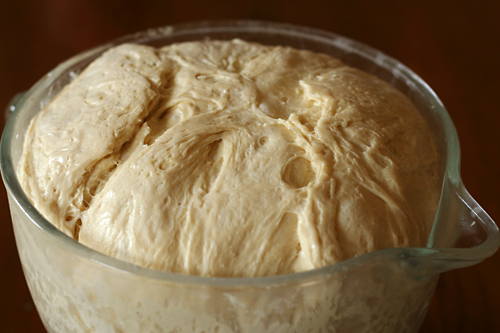
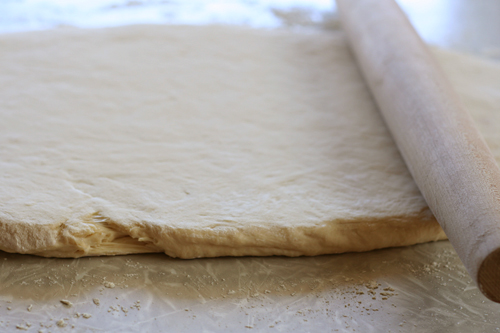
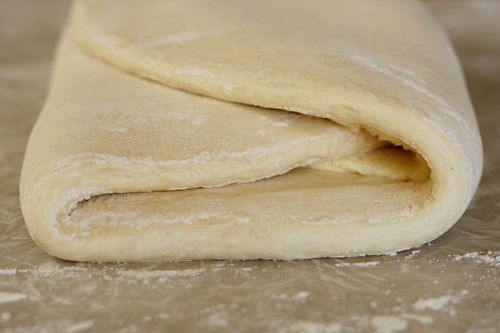


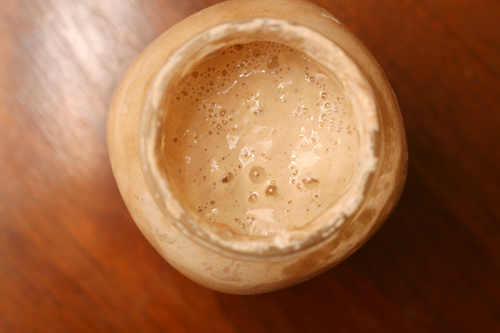
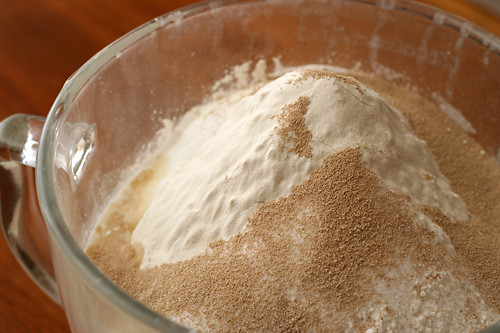
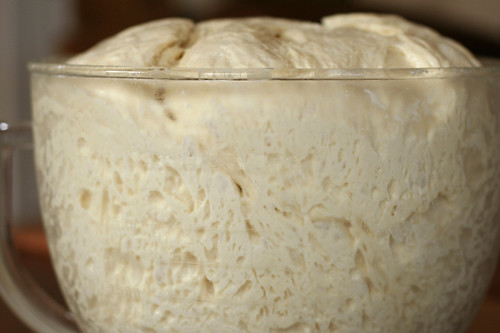
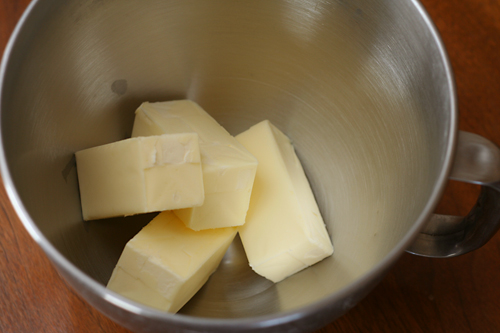
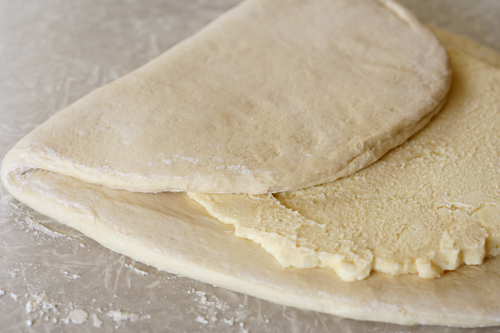
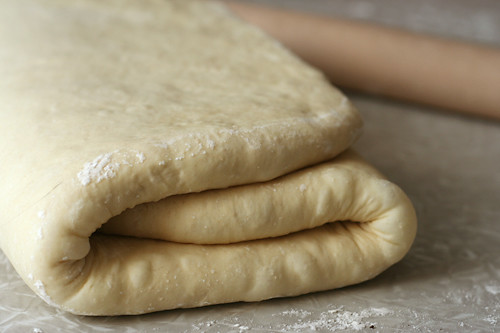








These look perfect! Well done! Now I just need to make a starter…
Croissants have always been on my “must try someday” list in my head. These look great! Excellent job!!
I wish I was you co-worker and had a starter. I love me a buttery croissant.
You know, your blog inspired me to try the Tartine Bread (I even wrote a post about it), and it is now my favorite bread ever.
I’ll have to try these croissants! One question… when you make your butter/flour mix, do you spread that out on a piece of parchment paper, or did you just directly apply it to your dough? You mention spreading it into an 8 x 12 rectangle… Great blog!
Tom – I rolled the butter between layers of parchment paper and then transferred it to the dough. I’m glad the Tartine bread was a hit with you!
So of all the croissant recipes you’ve tried now which is your favorite!?!
mac jack – This one is my favorite!
Bridget, do you know what is the recipe the follow at the bakery for the cheese and ham croissants? is it this one or that ? http://www.crumblycookie.net/2009/05/24/croissants-1-tartine/
Akis – I can’t say for sure, but I’m guessing it’s this one. I bet the other one is simplified in order to skip the sourdough starter, which most people don’t have or want to make.
Bridget thank you. I have also noticed that this one is using bread floor while that http://www.crumblycookie.net/2009/05/24/croissants-1-tartine/ all purpose floor. Does this make a big different to the final result? Thanks